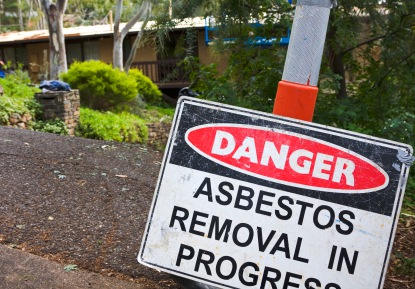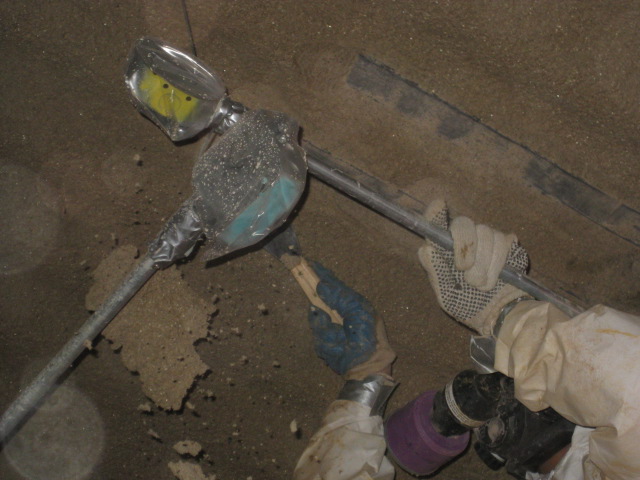Let’s Start Work
Together
Please feel free to contact us. We will get back to you with 1-2 business days. Or just call us now.
181 Bentley Street
Markham, Ontario
2100 Jetstream Road
London, Ontario


About Asbestos
Asbestos is the common name for silicate materials that have a fibrous structure. These materials are extremely resistant to acid and fire making them highly attractive for use in manufacturing building materials subject to extreme heat or acidic conditions. Asbestos can be found in various types of fire proofing materials, electrical and thermal insulation and brake linings. Its durability has made it popular in many heavy industrial applications.
Some limited uses for Asbestos were seen in the 1700’s, however, it was not until the late 1800’s during the Industrial Revolution, that asbestos come into widespread use. The steam powered factories of the Industrial Age with their many turbines, boilers, kilns, ovens, and other high-temperature equipment used asbestos extensively for insulation and as a fire retardant.
How can we help?
We recognize the importance of safe work practices/procedures associated within the abatement removal process. We thrive to meet or exceed all regulatory and safety standards when handling asbestos, to ensure that any risks associated are contained and eliminated. Our team of highly experienced and qualified professionals is trained comprehensively in all aspects of asbestos abatement including the proper handling, removal and disposal involved in the remediation process.
Find out how we can assist you in making your work environment a safer place.
Our Solutions & Benefits
Our team has over 30 years of experience in removing dangerous asbestos materials in any kind of environment including:
- Residential
- Commercial
- Industrial
- Government
- Institutional
Asbestos Removal
With the recognition of the serious health risk posed by asbestos, and the fact that it was so widely used, asbestos removal became a new industry of the 1980’s. The removal of asbestos in public buildings such as government offices and schools became a priority. Unfortunately, the removal work was often done by inexperienced contractors who created a bigger risk by disturbing the material than if it had been just left alone.
Working with asbestos has become a highly regulated activity and its removal is a difficult and often expensive undertaking. Not only do the workers need to be protected while they are engaged in the removal process, but the working environment must be sealed to protect against airborne asbestos escaping into adjoining parts of the building or into the general atmosphere around the building.
Workers require full respiration equipment and proper protective clothing to prevent contamination. Adequate ventilation and filtering of ambient air is paramount to the proper removal and abatement of further contamination of surrounding areas.
Uses and Products
Canada is by far the largest producer of asbestos, supplying 75% of the total world’s supply. Because of its cloth-like qualities, asbestos was in high demand. It could be woven into fireproof garments for firefighters and others who worked in high heat environments. Asbestos was also used in gas masks and woven into sheets to act as insulation and thermal proofing for pipes, boilers, and electrical products. It could be spray applied as fireproofing. As well, it was a perfect coating material for brake linings and clutch pads where friction created high heat.
Other uses include:
- Flooring - vinyl tile, vinyl sheet flooring, floor leveling compound
- Ceilings - ceiling tile, plaster or drywall jointing materials
- Walls - stippled finishes, thermal spray, asbestos cement panels
- Insulation - boilers, vessels, pipes, ducts, incinerators, floors, ceilings, walls, chillers
- Structural - fireproofing spray on beams, decks, joints, columns and other structural members
- Other miscellaneous uses - incandescent light fixture backing, wire insulation, fume hoods, lab counters, elevator brake shoes, heating cabinet panels, fire dampers, emergency generators – thermal insulation and exhaust manifolds, theater curtains, welding blankets, incinerators.
Asbestos Related Diseases
In the early twentieth century, as worker health started to become more of a concern, research began to reveal unusually high numbers of lung problems and related deaths among asbestos miners.
Despite the fact that many materials (such as fiberglass insulation) were created to replace asbestos, companies that used asbestos ignored the safer alternatives. It has only been recently (since the 1980’s) that a concerted effort has been made to regulate asbestos use and protect workers from the effects of the material.
Prolonged exposure to asbestos creates a serious risk for lung disease. Asbestos inhalation is the known cause of pleural plaques, asbestosis, mesothelioma, and causes cancers of the lung, esophagus, and colon. One of the difficulties of diagnosing asbestos related diseases is that they can have a long latency period – it can take between ten to forty years before symptoms are evident.


